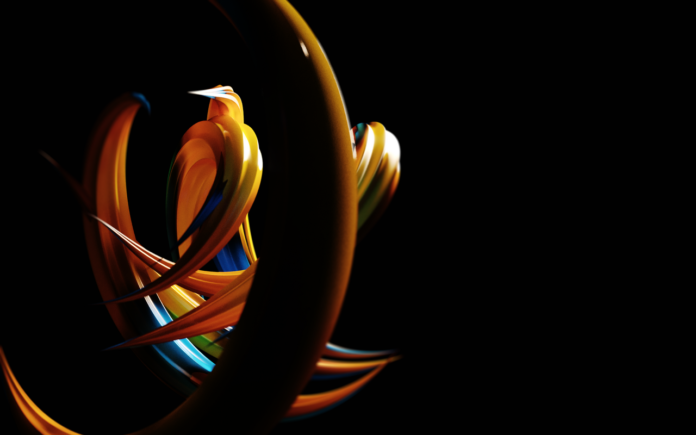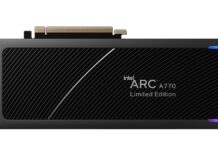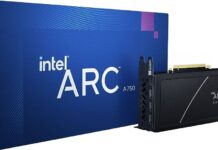Mixed media motion graphics is a form of animation that utilizes a combination of different artistic mediums to create a unique visual experience. This technique involves blending various elements such as live-action footage, 3D animation, hand-drawn illustrations, typography, and more to create a cohesive and visually stunning final product. Mixed media motion graphics are becoming increasingly popular in the world of advertising, film, and television due to their ability to capture the viewer’s attention and convey complex messages in a visually appealing way.
The process of creating mixed media motion graphics involves a combination of traditional and digital techniques. Artists may start by sketching out their ideas on paper, then scanning their sketches into a computer to be edited and animated using software such as Adobe After Effects or Cinema 4D. They may also incorporate live-action footage or photographs into their animations, which can be edited and manipulated using visual effects software. The end result is a dynamic and engaging visual experience that combines the best of both traditional and digital art forms.
Mixed media motion graphics offer a versatile and creative way to tell a story or convey a message. They can be used to create everything from explainer videos to title sequences for films and television shows. As technology continues to advance and new artistic mediums emerge, it’s likely that mixed media motion graphics will continue to evolve and become an even more popular form of animation in the years to come.
Understanding Mixed Media Motion Graphics
Mixed media motion graphics are a form of animation that combines different types of visual media to create a unique and dynamic visual experience. This type of animation is often used in advertising, film, and television to create engaging and eye-catching visuals.
Mixed media motion graphics typically involve combining two or more types of visual media, such as 2D animation, 3D animation, live-action footage, and still images. The different media are then layered and combined to create a seamless and dynamic visual experience.
One of the key benefits of mixed media motion graphics is that it allows animators to create complex and visually stunning animations that would be difficult or impossible to achieve with a single type of media. For example, a mixed media motion graphic might combine live-action footage with 2D and 3D animation to create a visually stunning and engaging experience.
Another benefit of mixed media motion graphics is that it allows animators to incorporate a wide range of visual styles and techniques into their animations. This can help to create a unique and memorable visual experience that stands out from other types of animation.
To create mixed media motion graphics, animators typically use a combination of software tools, such as Adobe After Effects, Cinema 4D, and Maya. These tools allow animators to create and manipulate different types of media and combine them into a single animation.
Overall, mixed media motion graphics are a powerful and versatile form of animation that can help to create engaging and visually stunning content for a wide range of applications.
Components of Mixed Media Motion Graphics
Mixed media motion graphics are a combination of different visual and audio elements that create a unique and engaging experience for the audience. The following are the two main components of mixed media motion graphics.
Visual Elements
Visual elements are the most important components of mixed media motion graphics. These elements include images, videos, typography, and animations. The visual elements are used to convey a message or story to the audience. The following are some of the most commonly used visual elements in mixed media motion graphics:
- Images: Images are used to convey a message or emotion. They can be photographs, illustrations, or graphics.
- Videos: Videos are used to tell a story or demonstrate a process. They can be live-action, animated, or a combination of both.
- Typography: Typography is used to convey a message or emotion through text. It can be used to emphasize a point or to create a mood.
- Animations: Animations are used to create movement and bring the visual elements to life. They can be simple or complex, depending on the message or story being conveyed.
Audio Elements
Audio elements are also an important component of mixed media motion graphics. They include music, sound effects, and voice-over narration. The audio elements are used to create an emotional connection with the audience and to enhance the visual elements. The following are some of the most commonly used audio elements in mixed media motion graphics:
- Music: Music is used to create a mood or emotion. It can be instrumental or have lyrics.
- Sound Effects: Sound effects are used to enhance the visual elements and create a more immersive experience for the audience.
- Voice-over Narration: Voice-over narration is used to provide information or to tell a story. It can be done by a professional voice actor or by someone within the organization.
In conclusion, mixed media motion graphics are a powerful tool for conveying a message or story. The visual and audio elements work together to create an engaging and memorable experience for the audience.
The Process of Creating Mixed Media Motion Graphics
Creating mixed media motion graphics involves several stages that require careful planning and execution. In this section, we will explore the three main stages of the process, namely conceptualization, design, and animation.
Conceptualization
The first stage of creating mixed media motion graphics is conceptualization. This is where the idea for the project is developed. The designer needs to take into account the client’s needs, target audience, and the message that the project aims to convey. This stage involves brainstorming, researching, and developing a concept.
During this stage, the designer should consider the following:
- The purpose of the project
- The target audience
- The message that the project aims to convey
- The visual style and tone of the project
- The budget and timeframe
Once the concept has been developed, the designer can move on to the next stage.
Design
The design stage is where the visual elements of the mixed media motion graphics project are created. This stage involves creating the storyboard, choosing the color scheme, selecting the typography, and creating the assets.
The storyboard is a visual representation of the project, which outlines the sequence of events and the visual elements that will be used. This allows the designer to plan how the different elements will work together to create a cohesive whole.
When choosing the color scheme, the designer should consider the mood and tone of the project. The typography should also be chosen carefully to ensure that it is legible and appropriate for the project.
Creating the assets involves creating or sourcing the images, videos, and other visual elements that will be used in the project. The designer should ensure that the assets are of high quality and are consistent with the visual style of the project.
Animation
The animation stage is where the project comes to life. This stage involves bringing the visual elements together and animating them to create a cohesive whole. This stage involves using software such as Adobe After Effects to create the animation.
The designer should consider the timing, pacing, and transitions of the animation. They should also ensure that the animation is consistent with the visual style and tone of the project.
In conclusion, creating mixed media motion graphics involves careful planning and execution. The designer needs to take into account the client’s needs, target audience, and the message that the project aims to convey. The three main stages of the process are conceptualization, design, and animation. By following these stages, the designer can create a cohesive and effective mixed media motion graphics project.
Uses of Mixed Media Motion Graphics
Mixed media motion graphics have numerous uses across various industries. They are versatile and can be applied in a variety of settings to achieve different goals. In this section, we’ll explore some of the common uses of mixed media motion graphics.
Advertising
Mixed media motion graphics are widely used in advertising to promote products and services. They are effective in capturing the attention of potential customers and conveying information about the product or service being advertised. Mixed media motion graphics can be used to create visually appealing ads that stand out from the competition.
In advertising, mixed media motion graphics can be used in various formats, including TV commercials, online ads, billboards, and social media posts. They can be used to showcase the features of a product, highlight its benefits, or tell a story about the brand. By using mixed media motion graphics, advertisers can create engaging and memorable ads that resonate with their target audience.
Entertainment
Mixed media motion graphics are also used in the entertainment industry to create visually stunning content. They are commonly used in films, TV shows, and video games to enhance the visual experience for the audience. Mixed media motion graphics can be used to create special effects, animate characters, or create entire environments.
In the entertainment industry, mixed media motion graphics can be used to create immersive experiences that transport the audience to different worlds. They can be used to create realistic environments that would be difficult or impossible to film in real life. By using mixed media motion graphics, filmmakers and game developers can create visually stunning content that captivates their audience.
Education
Mixed media motion graphics are also used in education to create engaging and interactive learning experiences. They are effective in explaining complex concepts and making learning more fun and interactive. Mixed media motion graphics can be used to create animations, infographics, and interactive simulations.
In education, mixed media motion graphics can be used to explain scientific concepts, historical events, or mathematical formulas. They can be used to create interactive simulations that allow students to explore different scenarios and learn through experimentation. By using mixed media motion graphics, educators can create engaging and interactive content that helps students learn and retain information.
Overall, mixed media motion graphics are a versatile tool that can be used in a variety of settings to achieve different goals. They are effective in capturing the attention of the audience and conveying information in a visually appealing way. Whether it’s in advertising, entertainment, or education, mixed media motion graphics can help create engaging and memorable experiences for the audience.
Advantages of Mixed Media Motion Graphics
Mixed media motion graphics have been gaining popularity in recent years due to their unique and visually appealing nature. Here are some advantages of using mixed media motion graphics:
1. Increased Creativity
Mixed media motion graphics allow for a wide range of creativity as it combines different mediums such as illustration, stop motion, and 3D animation. This opens up a whole new world of possibilities for designers and animators to explore and experiment with.
2. Better Engagement
Mixed media motion graphics are visually stimulating and can capture the attention of the audience better than traditional animation or graphics. This makes it a great tool for advertising and marketing as it can help to increase engagement and retention of information.
3. Versatility
Mixed media motion graphics can be used in a variety of settings such as television, film, social media, and advertising. It is also suitable for different types of content such as explainer videos, product demos, and educational videos. This makes it a versatile tool for designers and animators to incorporate into their work.
4. Realism
Mixed media motion graphics can incorporate real-life elements such as live-action footage or images, giving it a sense of realism that traditional animation may lack. This can help to make the content more relatable and engaging for the audience.
5. Cost-Effective
Mixed media motion graphics can be more cost-effective than traditional animation as it combines different mediums and techniques. This can help to reduce the time and resources needed to create high-quality animation and graphics.
Overall, mixed media motion graphics offer a unique and visually appealing way to engage with audiences and convey information. It allows for increased creativity and versatility while also being cost-effective.
Challenges in Mixed Media Motion Graphics
Creating mixed media motion graphics can be a complex and challenging process. Here are some of the challenges that artists and designers face when working with mixed media motion graphics:
Technical Challenges
One of the biggest challenges in mixed media motion graphics is technical. Combining different types of media, such as 2D graphics, 3D models, live-action footage, and audio, requires a deep understanding of various software tools and techniques. Designers need to be proficient in programs like Adobe After Effects, Cinema 4D, and Maya, as well as have a good understanding of video codecs, compression, and color grading.
Another technical challenge is ensuring that the different media types blend seamlessly together. For example, if a 2D graphic is placed in a 3D environment, it needs to look like it belongs there. Achieving this requires careful attention to detail and a lot of experimentation.
Creative Challenges
Mixed media motion graphics also pose creative challenges. Designers need to be able to come up with creative ideas that combine different media types in interesting and engaging ways. They need to be able to tell a story or convey a message through their work, while also ensuring that it is visually appealing and engaging.
Another creative challenge is ensuring that the different media types work together to create a cohesive whole. For example, if a live-action footage is combined with 2D graphics, the two need to work together to create a unified aesthetic.
Time and Budget Constraints
Finally, mixed media motion graphics can be time-consuming and expensive to produce. Creating high-quality motion graphics requires a significant amount of time and effort, which can be a challenge for designers who are working on tight deadlines.
In addition, using different types of media can also increase the production costs. For example, hiring actors and shooting live-action footage can be expensive, and creating 3D models can be time-consuming and require specialized skills.
Overall, mixed media motion graphics present a range of technical, creative, and budgetary challenges. However, with the right skills, tools, and techniques, designers can create stunning and engaging motion graphics that combine different media types in innovative and compelling ways.
Future of Mixed Media Motion Graphics
Mixed media motion graphics have been gaining popularity in recent years, and the trend is expected to continue in the future. With the rise of new technologies and software, mixed media motion graphics are becoming more accessible and easier to create.
One of the primary reasons mixed media motion graphics are becoming more popular is their ability to create unique and engaging content. By combining different elements, such as live-action footage, 2D and 3D animation, typography, and sound design, mixed media motion graphics can capture the viewer’s attention and convey complex ideas in a visually appealing way.
Another reason for the popularity of mixed media motion graphics is their versatility. They can be used in a variety of contexts, from advertising and marketing to educational and instructional videos. They can also be used in film and television production to create special effects and enhance the overall visual experience.
In the future, mixed media motion graphics are expected to become even more advanced and sophisticated. As technology continues to evolve, new tools and software will be developed, allowing designers and animators to push the boundaries of what is possible. This means that mixed media motion graphics will continue to be at the forefront of visual storytelling, and will play an increasingly important role in the world of media and entertainment.







